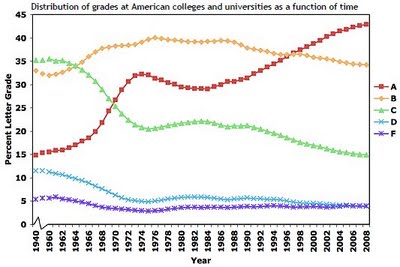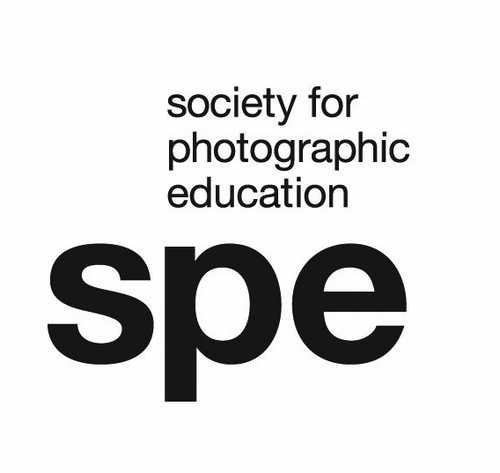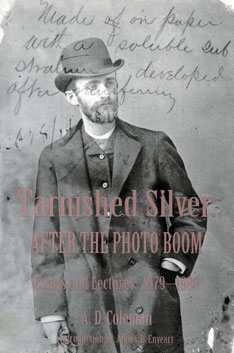 Though you wouldn’t know it from the unusually chilly weather here in New York City, we’ve reached the season of graduation ceremonies, senior proms, and the other rituals of passage from one level of education to another or the transition from the classroom to what we call “the real world.” Let me participate in that celebratory process in my usual contrarian fashion, by offering my own version of a commencement address ― albeit from an uninvited guest speaker ― intended for delivery at some college, university, polytechnic or art institute.
Though you wouldn’t know it from the unusually chilly weather here in New York City, we’ve reached the season of graduation ceremonies, senior proms, and the other rituals of passage from one level of education to another or the transition from the classroom to what we call “the real world.” Let me participate in that celebratory process in my usual contrarian fashion, by offering my own version of a commencement address ― albeit from an uninvited guest speaker ― intended for delivery at some college, university, polytechnic or art institute.
Greetings, Graduates
As you’ll no doubt recall from the National Public Radio show “Prairie Home Companion,” in Garrison Keillor’s fictional midwestern town of Lake Wobegon, Minnesota “all the children are above average.” Just like all of you, I’m sure.

Garrison Keillor, “News from Lake Wobegon” (1990), cover.
Well, Lake Wobegon now has its own law school, where the same principle applies. Or, to be more accurate, the Lake Wobegon model ― “all the children are above average” ― has now spread to law schools nationwide. See Catherine Rampell’s New York Times story of June 21, 2010, “In Law Schools, Grades Go Up, Just Like That.” According to Rampell, law schools across the country are using assorted formulae to bump up their recent students’ grades across the board, in order to increase their employment opportunities after graduation.
“If somebody’s paying $150,000 for a law school degree, you don’t want to call them a loser at the end,” Rampell quotes Stuart Rojstaczer, a former geophysics professor at Duke who now studies grade inflation, as saying. “So you artificially call every student a success.” The official name the schools use for this process is the wonderful euphemism “grade reform.”
Grade inflation and social promotion didn’t start in law schools, of course. It’s pandemic now throughout the K-12 system, and commonplace in the liberal arts, humanities, and social sciences. What’s unusual here is that it’s infected the study of law, heretofore considered a rigorous discipline. As Rampell writes, “Unlike undergraduate grading, which has drifted northward over the years because most undergraduate campuses do not strictly regulate the schoolwide distribution of As and Bs, law schools have long employed clean, crisp, bell-shaped grading curves.”

College Grade Inflation 1940-2008. Chart © copyright 2008 by Stuart Rojstaczer.
Not any more, it seems. As the charts accompanying “A History of College Grade Inflation” (a July 14, 2011 follow-up piece by Rampell) indicate, by Y2K the letter grade A had become the most frequent grade given to college students in the United States. Click here for the study by Stuart Rojstaczer and Christopher Healy on which Rampell based that story, plus other disheartening graphs.
Kiss Those Curves Goodbye
Having witnessed this “northward drift” of grades as a teacher in both undergraduate and graduate liberal-arts programs over the past four decades, I can testify that it’s very real. And I’m willing to wager that, if this practice ever get traced to its origins in higher education, we will learn that it began in college-level studio art programs, and, even more specifically, in college-level photo programs, circa 1965. As I noted in this blog last summer,
Post-secondary photo education is notoriously one big gut course, evidenced by the facts that nobody flunks photography and a GPA below A-minus has become unusual in most such programs. Social promotion, grade inflation, the overall lowering of the basketball hoops, are the norm. (Like the children of Lake Wobegon, all post-secondary photo students are above average.) Over the past decade I’ve guest-taught at two schools — one a BFA program in a university, the other an MFA program in an art school — that tacitly required me to grade all my students between A-plus and A-minus, lest they lose tuition remission and other financial perks, an imperative not disclosed to me until I turned in my initial grade sheets.
 I’d struck approximately that same note in a keynote address I delivered to the Photo Imaging Education Association (PIEA) Conference at the Sydney Convention Centre, Australia, on April 29, 2006:
I’d struck approximately that same note in a keynote address I delivered to the Photo Imaging Education Association (PIEA) Conference at the Sydney Convention Centre, Australia, on April 29, 2006:
I believe that I err on the side of generosity in calling photo education a discipline. There’s little discipline involved in it, by any definition of the term. No one flunks photography, certainly not in fine-art photo programs. How could they? In the current environment for photography-as-art, there’s no right way to make photographic work, because there’s no wrong way to do so; there’s only pleasing your faculty’s taste patterns or failing to do so.
As my former colleague Richard Kirstel used to say, “The difference between commercial photography and creative photography today is that the commercial photography has to be well done.” I can remember curator, critic, and editor Carol Squiers asserting, at a regional SPE conference in the 1980s, that the pomo photographers — Cindy Sherman et al — were gradually “bringing their work up to professional standards.” I can remember, in the same era, the director of the photo program at the Maryland Institute, College of Art boasting that 80 percent of their most recent crop of students had graduated cum laude. Neither he nor Ms. Squiers showed the slightest trace of ironic intent in their statements. (Click here for a PDF of that talk.)
The Survey Not Taken
 Here’s a survey that I guarantee you will never get undertaken by the Society for Photographic Education — and whose results will never get published in the unlikely event that someone does undertake it.
Here’s a survey that I guarantee you will never get undertaken by the Society for Photographic Education — and whose results will never get published in the unlikely event that someone does undertake it.
1. Over the past 10 years, in your BFA department of photography, how many students have you had working toward their degree in photography? How many taking photography as a minor, or part-time?
2. Over the past 10 years, in your BFA department of photography, how many times cumulatively have your faculty given students the grade of:
- A (inc. A+, A, and A-)
- B (inc. B+, B, and B-)
- C (inc. C+, C, and C-)
- D (inc. D+, D, and D-)
- F
3. If your BFA program has an honors/cum laude designation for graduates, how many of your students during that period have graduated with honors/cum laude?
4. Over the past 10 years, in your MFA department of photography, how many students have you had working toward their degree in photography? How many taking photography as a minor, or part-time?
5. Over the past 10 years, in your MFA department of photography, how many times cumulatively have your faculty given students the grade of:
- A (inc. A+, A, and A-)
- B (inc. B+, B, and B-)
- C (inc. C+, C, and C-)
- D (inc. D+, D, and D-)
- F
6. If your MFA program has an honors/cum laude designation for graduates, how many of your students during that period have graduated with honors/cum laude?
•

A. D. Coleman, “Tarnished Silver” (1996), cover.
The phenomenon of social promotion had risen to visibility but not to centrality when I delivered a much earlier talk, “Identity Crisis: The State of Photography Education Today,” at the Second Annual Photography Congress of the Maine Photographic Workshops in Rockport, Maine, on August 17, 1987. On that occasion I emphasized the lamentable conflation of polytechnic, art-institute, and university models and goals in post-secondary photo-ed programs everywhere, now such a done deal that no one gives it a moment’s thought anymore. (You’ll find an expanded version of that text in my 1996 collection of essays, Tarnished Silver: After the Photo Boom, Essays and Lectures 1979-1989. Click here for a PDF version.)
Since then the tendency toward social promotion has gone viral, at least in the U.S., an inevitable consequence of viewing students as clients in a mercantile culture where the customer is always right. For other perspectives on this plague, see the following:
GIGO
Yet even if we trace post-secondary grade inflation to college-level photo programs, the practice surely didn’t begin there, but much further down the pedagogical chain. “Nearly half of all undergraduates in the United States arrive on campus needing remedial work before they can begin regular credit-bearing classes,” Tamara Lewin informs us in her New York Times report, “Colleges Adapt Online Courses to Ease Burden,” dated April 29, 2013.
 If, as commonly understood, a high-school degree certifies one as ready for college, yet 50 percent of incoming freshmen require “remedial work” before beginning college-level classes, how can we explain this without confronting social promotion? Especially when, statistically, 75 percent of incoming U.S. college students rate themselves as “above average,” according to the American Freshman Survey?
If, as commonly understood, a high-school degree certifies one as ready for college, yet 50 percent of incoming freshmen require “remedial work” before beginning college-level classes, how can we explain this without confronting social promotion? Especially when, statistically, 75 percent of incoming U.S. college students rate themselves as “above average,” according to the American Freshman Survey?
So, inundated by underprepared and underachieving applicants with excessive self-esteem, the post-secondary institutions dumb themselves down in order not to discourage their client base, while handing out an ever greater number of degrees. Thus they have gotten sucked into the academic version of the classic inflationary spiral that comes with debasing the coin of the realm by printing up too much fiat currency. This may help to explain “the prevalence of unrealistic self-assessment among applicants” that prospective employers find among today’s college graduates. (The clinical term for this cognitive bias is “illusory superiority.”) This exemplifies the concept known to information technology by the acronym GIGO: Garbage in, garbage out. Present company excepted, of course.
Of course, it may turn out that the cause of this apparent diminished capacity is that, according to recent research reported on by Macrina Cooper-White in a recent article in The Huffington Post, “[H]uman intelligence is on the decline. . . . Westerners have lost 14 I.Q. points on average since the Victorian Era.” Social promotion over the past four decades wouldn’t account for 170 years of intellectual devolution. Some of you will probably find that reassuring.
(For a bit of perspective, see George E. Howard on “The State University in America,” published in The Atlantic Monthly in March, 1891: “[T]here is a widespread feeling of discontent with the present ideal of academic culture which sometimes degenerates into downright pessimism. It must be conceded that education costs too much time and too much money for the kind. The college curriculum should be still further transformed in order to bring it into harmony with the requirements of modern life. Our average standard of attainment is very low, and the reason is plain, we have wasted our resources.”)
(Part 1 I 2)
•
This post supported by a donation from the Estate of Lyle Bongé.
Say Goodbye to Lake Wobegon U. (1)
Greetings, Graduates
As you’ll no doubt recall from the National Public Radio show “Prairie Home Companion,” in Garrison Keillor’s fictional midwestern town of Lake Wobegon, Minnesota “all the children are above average.” Just like all of you, I’m sure.
Garrison Keillor, “News from Lake Wobegon” (1990), cover.
Well, Lake Wobegon now has its own law school, where the same principle applies. Or, to be more accurate, the Lake Wobegon model ― “all the children are above average” ― has now spread to law schools nationwide. See Catherine Rampell’s New York Times story of June 21, 2010, “In Law Schools, Grades Go Up, Just Like That.” According to Rampell, law schools across the country are using assorted formulae to bump up their recent students’ grades across the board, in order to increase their employment opportunities after graduation.
“If somebody’s paying $150,000 for a law school degree, you don’t want to call them a loser at the end,” Rampell quotes Stuart Rojstaczer, a former geophysics professor at Duke who now studies grade inflation, as saying. “So you artificially call every student a success.” The official name the schools use for this process is the wonderful euphemism “grade reform.”
Grade inflation and social promotion didn’t start in law schools, of course. It’s pandemic now throughout the K-12 system, and commonplace in the liberal arts, humanities, and social sciences. What’s unusual here is that it’s infected the study of law, heretofore considered a rigorous discipline. As Rampell writes, “Unlike undergraduate grading, which has drifted northward over the years because most undergraduate campuses do not strictly regulate the schoolwide distribution of As and Bs, law schools have long employed clean, crisp, bell-shaped grading curves.”
College Grade Inflation 1940-2008. Chart © copyright 2008 by Stuart Rojstaczer.
Not any more, it seems. As the charts accompanying “A History of College Grade Inflation” (a July 14, 2011 follow-up piece by Rampell) indicate, by Y2K the letter grade A had become the most frequent grade given to college students in the United States. Click here for the study by Stuart Rojstaczer and Christopher Healy on which Rampell based that story, plus other disheartening graphs.
Kiss Those Curves Goodbye
Having witnessed this “northward drift” of grades as a teacher in both undergraduate and graduate liberal-arts programs over the past four decades, I can testify that it’s very real. And I’m willing to wager that, if this practice ever get traced to its origins in higher education, we will learn that it began in college-level studio art programs, and, even more specifically, in college-level photo programs, circa 1965. As I noted in this blog last summer,
Post-secondary photo education is notoriously one big gut course, evidenced by the facts that nobody flunks photography and a GPA below A-minus has become unusual in most such programs. Social promotion, grade inflation, the overall lowering of the basketball hoops, are the norm. (Like the children of Lake Wobegon, all post-secondary photo students are above average.) Over the past decade I’ve guest-taught at two schools — one a BFA program in a university, the other an MFA program in an art school — that tacitly required me to grade all my students between A-plus and A-minus, lest they lose tuition remission and other financial perks, an imperative not disclosed to me until I turned in my initial grade sheets.
I believe that I err on the side of generosity in calling photo education a discipline. There’s little discipline involved in it, by any definition of the term. No one flunks photography, certainly not in fine-art photo programs. How could they? In the current environment for photography-as-art, there’s no right way to make photographic work, because there’s no wrong way to do so; there’s only pleasing your faculty’s taste patterns or failing to do so.
As my former colleague Richard Kirstel used to say, “The difference between commercial photography and creative photography today is that the commercial photography has to be well done.” I can remember curator, critic, and editor Carol Squiers asserting, at a regional SPE conference in the 1980s, that the pomo photographers — Cindy Sherman et al — were gradually “bringing their work up to professional standards.” I can remember, in the same era, the director of the photo program at the Maryland Institute, College of Art boasting that 80 percent of their most recent crop of students had graduated cum laude. Neither he nor Ms. Squiers showed the slightest trace of ironic intent in their statements. (Click here for a PDF of that talk.)
The Survey Not Taken
1. Over the past 10 years, in your BFA department of photography, how many students have you had working toward their degree in photography? How many taking photography as a minor, or part-time?
2. Over the past 10 years, in your BFA department of photography, how many times cumulatively have your faculty given students the grade of:
3. If your BFA program has an honors/cum laude designation for graduates, how many of your students during that period have graduated with honors/cum laude?
4. Over the past 10 years, in your MFA department of photography, how many students have you had working toward their degree in photography? How many taking photography as a minor, or part-time?
5. Over the past 10 years, in your MFA department of photography, how many times cumulatively have your faculty given students the grade of:
6. If your MFA program has an honors/cum laude designation for graduates, how many of your students during that period have graduated with honors/cum laude?
•
A. D. Coleman, “Tarnished Silver” (1996), cover.
The phenomenon of social promotion had risen to visibility but not to centrality when I delivered a much earlier talk, “Identity Crisis: The State of Photography Education Today,” at the Second Annual Photography Congress of the Maine Photographic Workshops in Rockport, Maine, on August 17, 1987. On that occasion I emphasized the lamentable conflation of polytechnic, art-institute, and university models and goals in post-secondary photo-ed programs everywhere, now such a done deal that no one gives it a moment’s thought anymore. (You’ll find an expanded version of that text in my 1996 collection of essays, Tarnished Silver: After the Photo Boom, Essays and Lectures 1979-1989. Click here for a PDF version.)
Since then the tendency toward social promotion has gone viral, at least in the U.S., an inevitable consequence of viewing students as clients in a mercantile culture where the customer is always right. For other perspectives on this plague, see the following:
GIGO
Yet even if we trace post-secondary grade inflation to college-level photo programs, the practice surely didn’t begin there, but much further down the pedagogical chain. “Nearly half of all undergraduates in the United States arrive on campus needing remedial work before they can begin regular credit-bearing classes,” Tamara Lewin informs us in her New York Times report, “Colleges Adapt Online Courses to Ease Burden,” dated April 29, 2013.
So, inundated by underprepared and underachieving applicants with excessive self-esteem, the post-secondary institutions dumb themselves down in order not to discourage their client base, while handing out an ever greater number of degrees. Thus they have gotten sucked into the academic version of the classic inflationary spiral that comes with debasing the coin of the realm by printing up too much fiat currency. This may help to explain “the prevalence of unrealistic self-assessment among applicants” that prospective employers find among today’s college graduates. (The clinical term for this cognitive bias is “illusory superiority.”) This exemplifies the concept known to information technology by the acronym GIGO: Garbage in, garbage out. Present company excepted, of course.
Of course, it may turn out that the cause of this apparent diminished capacity is that, according to recent research reported on by Macrina Cooper-White in a recent article in The Huffington Post, “[H]uman intelligence is on the decline. . . . Westerners have lost 14 I.Q. points on average since the Victorian Era.” Social promotion over the past four decades wouldn’t account for 170 years of intellectual devolution. Some of you will probably find that reassuring.
(For a bit of perspective, see George E. Howard on “The State University in America,” published in The Atlantic Monthly in March, 1891: “[T]here is a widespread feeling of discontent with the present ideal of academic culture which sometimes degenerates into downright pessimism. It must be conceded that education costs too much time and too much money for the kind. The college curriculum should be still further transformed in order to bring it into harmony with the requirements of modern life. Our average standard of attainment is very low, and the reason is plain, we have wasted our resources.”)
(Part 1 I 2)
•
This post supported by a donation from the Estate of Lyle Bongé.